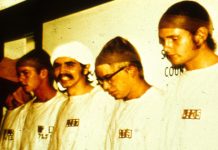In the realm of developmental psychology, the concept of the personal fable refers to an adolescent’s belief in their own uniqueness and invulnerability, often accompanied by a sense of drama and personal narrative that is distinct from others.
This phenomenon was first articulated by psychologist David Elkind in the 1960s, as a component of adolescent egocentrism, which arises during the cognitive maturation process.
The personal fable can lead to risk-taking behaviors due to the individual’s conviction that they are immune to the consequences that befall others. Examples of this can be seen in teenagers who engage in unprotected sex or substance abuse under the belief that they will not suffer the same adverse effects as their peers.
Understanding this construct aids in comprehending the complex psychological landscape of adolescence and informing tailored interventions.
Definition
The personal fable is a psychological concept that refers to an adolescent’s belief that they are unique and invincible. It is a way of thinking where young individuals see themselves as special and immune to the dangers that others face.
This perspective can make them feel like their experiences are one-of-a-kind and separate from everyone else.
Understanding the personal fable helps us empathize with teenagers and comprehend the challenges they go through during their development.
History
Tracing its origins to the late 19th century, the concept of the personal fable emerged within the field of developmental psychology. It was first introduced by psychologist David Elkind in the 1960s as he explored adolescent egocentrism within the broader framework of cognitive development.
Elkind’s scholarly endeavor was rooted in the desire to understand the unique ways in which adolescents perceive themselves and their place in the world. Building upon the earlier works of renowned theorists such as Jean Piaget and Erik Erikson, Elkind’s research shed light on the psychological processes occurring during adolescence. His analysis posited that during this developmental stage, adolescents construct a narrative of personal uniqueness and invulnerability, a phenomenon he termed the personal fable.
Elkind’s groundbreaking work bridged the gap between cognitive development and adolescent identity formation. By adding a nuanced psychological dimension to Piaget’s theory of cognitive development, specifically the stage of formal operational thought, Elkind deepened our understanding of the complex inner lives of adolescents.
The concept of the personal fable has since been further explored and refined by subsequent researchers and scholars in the field of psychology. Significant events and studies have contributed to its evolution, such as the continued examination of adolescent egocentrism and the exploration of the impact of social media on the personal fable phenomenon.
Examples
Throughout adolescence, individuals often exhibit behaviors that embody the personal fable, which is the belief that they are unique and invincible.
Here are some practical examples to help you understand this term:
- Risky driving: Imagine a teenager who drives recklessly, speeding and taking dangerous risks on the road. They might believe that accidents only happen to other people and that they are immune to any harm or consequences.
- Emotional isolation: Picture an adolescent who goes through their first heartbreak. They might insist that no one can understand the depth of their pain and isolate themselves, feeling like their experience is completely unique and misunderstood by others.
- Social media validation: Consider a young person who constantly seeks validation on social media. They may believe that their online presence is exceptional and that their experiences and opinions are unlike anyone else’s. They might obsessively seek likes, comments, and followers, convinced that their content is one-of-a-kind.
These examples demonstrate how the personal fable manifests in real-life situations. By understanding this concept, we can empathize with the emotional complexities of adolescence and recognize the importance of promoting healthier decision-making and emotional well-being in young individuals.
Related Terms
Several psychological constructs are closely related to the concept of the personal fable, including adolescent egocentrism, the imaginary audience, and the invincibility illusion. These terms share a common thread in their association with the adolescent experience but differ in certain aspects.
Adolescent egocentrism is characterized by heightened self-consciousness during teenage years. It involves the belief that one’s thoughts, feelings, and experiences are unique and not understood by others. This self-absorption complements the personal fable by fostering a sense of personal uniqueness and invulnerability.
The imaginary audience, on the other hand, refers to the belief that adolescents are constantly being watched and judged by others. It can exacerbate feelings of self-importance and uniqueness. While it overlaps with the personal fable in terms of self-centeredness, the imaginary audience specifically focuses on the perception of being under constant scrutiny.
Lastly, the invincibility illusion is a facet of the personal fable that leads to risky behaviors. It stems from a belief in one’s own exemption from harm. The invincibility illusion and the personal fable are closely connected in their association with risk-taking tendencies, but the invincibility illusion specifically emphasizes a sense of invulnerability.
References
Knowledge in the field of developmental psychology forms the basis for understanding the phenomenon of the personal fable. The following reputable sources have documented research on this topic:
- Elkind, D. (1967). Egocentrism in adolescence. Child Development, 38(4), 1025-1034.
- This seminal study by Elkind explores the concept of egocentrism in adolescence and how it relates to the development of the personal fable.
- Alberts, J., & Steinberg, L. (2011). Peer influence in adolescent decision making. In B. Bradford Brown & Mitchell J. Prinstein (Eds.), Encyclopedia of Adolescence (Vol. 2, pp. 11-20). San Diego, CA: Academic Press.
- This chapter provides a comprehensive overview of the influence of peers on adolescent decision-making and how it intersects with the personal fable.
- Casey, B. J., Jones, R. M., & Hare, T. A. (2008). The adolescent brain. Annals of the New York Academy of Sciences, 1124(1), 111-126.
- This article delves into the neurobiological aspects of adolescent brain development and its implications for the personal fable.
- Steinberg, L. (2007). Risk taking in adolescence: New perspectives from brain and behavioral science. Current Directions in Psychological Science, 16(2), 55-59.
- Steinberg’s research sheds light on the cognitive and emotional processes underlying risk-taking behavior in adolescence, including the role of the personal fable.
These sources provide empirical and theoretical frameworks that elucidate the intricate dynamics between adolescent egocentrism and the development of a personal fable. They explore the cognitive and emotional processes that lead to the formation of this uniquely adolescent narrative, offering insights into its potential adaptive and maladaptive consequences.
The literature traces the evolution of the concept, critically examining its impact on adolescent behavior and decision-making. By dissecting the nuanced underpinnings of the personal fable, these references contribute to a deeper empathetic appreciation of the adolescent experience and the scholarly discourse surrounding this developmental construct.



